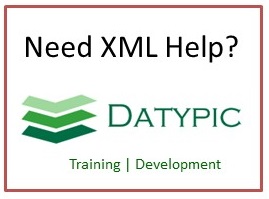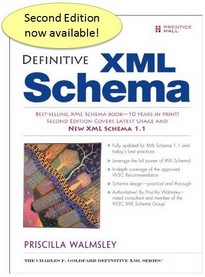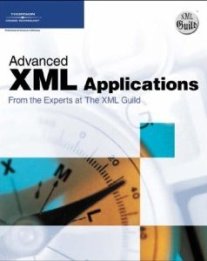target
Target within a multi-column-toc-entry container. Used to provide various items in the last column of the multiple column table of contents entry.
Element information
Content
- Any text (mixed) content, intermingled with:
- Choice [0..*]
- marker [0..1]The marker exists wherever #PCDATA is allowed. It is used at the developers discretion.
- added-phraseNewly added or inserted material. This material is usually shown in italic. There are two ways material may be marked as new or deleted. If an entire structure such as a <title> or <section> has been added or deleted, the changed attribute on the structure could be set to “added” or “deleted.” If only a small portion of a structure has been added or deleted, perhaps a few words or a single letter, the <added-phrase> and <deleted-phrase> elements are used to mark those small additions and deletions. Note: This is not the element to be used in an amendment to insert text. This is the element used in a bill or resolution to indicate that text has been added. In an amendment, the text to be inserted is contained within a <text-to-insert> element.
- deleted-phraseWords or phrases which have been stricken or which show strike-through. Material that has been deleted from a bill or resolution is printed and displayed as typographically distinct, to indicate that it has been removed. In current measures, this material is usually shown with a line through it as to indicate that it has been stricken. There are two ways material may be marked as new or deleted. If an entire structure such as a <title> or <section> has been added or deleted, the changed attribute on the structure could be set to “added” or “deleted.” If only a small portion of a structure has been added or deleted, perhaps a few words or a single letter, the <added-phrase> and <deleted-phrase> elements are used to mark those small additions and deletions. Note: This is not the element used in an amendment to strike text. This is the element used in a bill or resolution to indicate text that has been stricken. The instructions in an amendment to indicate that text is to be stricken are marked with the <text-to-strike-out> element.
- internal-xrefPointer, or cross reference, to another portion of the current document.
- external-xrefPointer, or cross reference, to material outside the document.
- fractionA fraction expression that displays or prints inline with regular text (e.g., 2/5).
- superscriptElement to contain superscripted character string.
- subscriptElement to contain subscripted character string.
- italicWords displayed in italic for emphasis or to indicate a book title or ship name or other purposes primarily within text or header elements. Note: This is not used to indicate inserted, instead the added-phrase element is used to indicate inserted text.
- quoteWords displayed in quotation marks for emphasis or to indicate a speech or other purposes primarily within text or header elements. This represents the inline quote element.
- inline-commentAn inline-comment element defines an inline-comment from the author. This element is not displayed on output.
- act-nameContainer within the phrase-level entity that allows an act-name (ex. Civil Rights Act of 1964) to be tagged within the text element.
- formulaContainer for a graphic element representing a scientific or mathematical equation.
- termA word or phrase referencing a definition elsewhere in the document usually in the same text area.
- omitted-textUsed to indicate that a span of copy is not present in the document. This element may be used to tag a few missing characters (horizontal missing text) or any number of missing lines (vertical missing text). Use of this element will result in a line of “stars” (asterisks) being printed or displayed where copy is missing. This line typically consists of three or seven “stars” (asterisks). The Ramseyer portion of Committee Reports also uses three and seven “stars” (asterisks).
- linebreakUsed to force a newline in the output. Should be used very rarely.
- nobreakUsed to hold text together in the output. Primary use is in table cells. Should be used very rarely.
- pagebreakUsed to force a new page in the output. Should be used very rarely.
- definitionThe meaning of a term; may include other terms the definitions which are referenced elsewhere.
- header-in-textElement for headers that appear in the text. The casing for these headers must be transformed appropriate to their level as described in the <header> element section.
- committee-nameThe name of a working subdivision of a chamber, which prepares legislation or conducts investigations.
- debate-time
- sponsorIdentification information for the congressional member who introduced a legislative measure, for himself/herself, another member (noted in the Senate with “by request”), or for the administration; usually just the name but sometimes including additional information such as the state represented. (Note: a measure can only have one sponsor).
- cosponsorIdentification information for a congressional member who has signed onto a measure, signifying his/her support; usually just the name but sometimes including additional information such as the state represented.
- nonsponsorIdentification information for a legislator who has signed onto the measure, but not a sponsor or cosponsor; usually just the name but sometimes including additional information such as the state represented.
- short-titleThe abbreviated or shortened name of a measure or portion of a measure. The short title is used in two senses: (1) the abbreviated or shortened name of an entire measure, used as an alternative to the long title when speaking of the measure; and (2) the abbreviated or shortened name of a portion of a measure, such as a title or a division. Unlike most metadata which must appear in the form of a document, a short title may appear almost anywhere within the text of a measure. Therefore, the short-titles will likely be implemented using text-entities.
- editorialIs an element in the text-model. Its intended use is to reference opinion.
- footnoteAn element used for a note of reference, explanation, or comment.
- footnote-refAn element used to reference a footnote used for a note of reference, explanation, or comment.
- provisoConditional language under which an appropriation is made. The first Proviso within a structure begins with the generated text “Provided, ” and ends with a generated colon. Subsequent Provisos within the same structure begin with the generated text “Provided further, ” and end with a generated period. No punctuation should be keyed as the final punctuation symbol for any proviso as this punctuation will be provided by the output specification.
from group pcd-modelfrom group phrase-levelfrom subst. group revisionsfrom subst. group refs
from group text-model
Attributes
None
Used in
- Anonymous type of element multi-column-toc-entry


